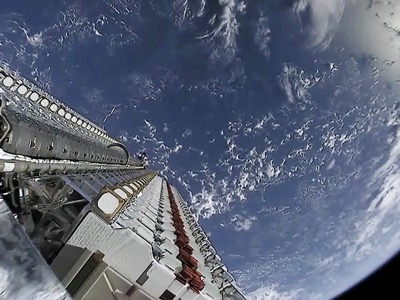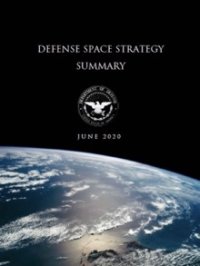
We have noted the publication of the summary of the open version of the “Defence Space Strategy” released by the US Department of Defence which sets priority tasks for the Defence Department in outer space for the next ten years and provides guidelines to reach them.
The document confirms Washington’s aggressive policy in the space area. The final goal is clearly indicated – to ensure America’s “space superiority.” In this connection the Pentagon’s activities will focus on the military use of space.
Outer space is viewed by the US side as an arena for combat activity (this is presented as a fait accompli). An emphasis is made that the use of space by the United States and their allies and partners must be underpinned by sustained, comprehensive US military strength, and not only for defensive goals as a deterrence but also “to defeat adversary hostile use of space.”
In the context of pursuing these goals, specific objectives include the modernisation of the US Space Force, planning for a wide range of space operations in case of a conflict, updating the rules for the use of force, designing proactive military systems, and qualified personnel training.
Focus is given to US interaction in space with its allies and partners. However, Washington assigns them only an auxiliary role in implementing its military space plans. Only financial, technical or personnel assistance is expected from allies and partners.
To justify the pursuit of this destructive course which initiates an arms race in space and destabilises the international security situation, Washington is using its routine tactic of blaming others. Our US colleagues claim that China and Russia present the most immediate and serious threats to US space operations, without providing any evidence, of course. The thesis is presented on a changing strategic situation and a new confrontation of great powers where space is the central arena.
They resort to directly twisting the facts by telling the world community and the US public that China and Russia have allegedly “weaponised” space. They refer to the 2014 Russian military doctrine without providing specifics as a factor that contributes to turning space into a “warfare arena.” Allegedly, our doctrine presupposes the possibility of using “counter-space capabilities as a means for reducing US, allied, and partner military effectiveness and for winning future wars.”
Obviously, the military doctrine of Russia does not contain anything like this. The document is open to the public and anyone interested can read it. On the contrary, the doctrine talks about countering attempts by certain states to achieve military superiority by deploying weapons in outer space, signing an international treaty to prevent this, and about agreeing at the UN on elements for the legal regulation of safe space activity.
Only defensive objectives in space were given to the Armed Forces of Russia: such as early warning of an air space attack, ensuring readiness for countering air space attack technology, deploying and maintaining orbital groups of space probes in the strategic space area which ensure the performance of the Russian Army, and the improvement of the air and space defence system.
To legitimise its destructive policy, Washington proposes focusing on promoting standards and norms of behaviour in space favourable to US, allied, and partner interests. Of course, the Americans do not say anything about negotiations, about a legally binding international instrument to prevent an arms race in space which Russia, China and the bulk of the international community insist on.
We carefully monitor Washington’s aggressive endeavours and carefully analyse possible consequences. Russia holds a completely opposite position by prioritising the use and study of space exclusively within a peaceful context, and preventing an arms race in space. The key initiative still remains the Russia-China draft treaty on the prevention of the placement of weapons in space, and the threat or use of force against outer space objects (PPWT). An updated version of the draft treaty was submitted for consideration at the Conference on Disarmament (CD) several years ago. All existing and any additional concerns of the states can and must be resolved at the negotiating table on PPWT and CD. We will continue active result-oriented efforts in this area.
We urge the US to take a responsible stand. As a reminder, all of Washington’s previous attempts to ensure military superiority have invariably ended with increased tensions and dangerous spirals in the arms race. An arms rivalry in space could have a ruinous impact on international security and strategic stability.
We see the opportunity to cancel reciprocal concerns within the framework of the full-featured substantive Russia-US dialogue on a wide range of issues of safe space activity. An agreement to hold such a dialogue was reached back on January 16. We reconfirm our readiness to discuss all the issues of space activity with representatives from the interested agencies and organisations in both countries.












Stay In Touch
Follow us on social networks
Subscribe to weekly newsletter